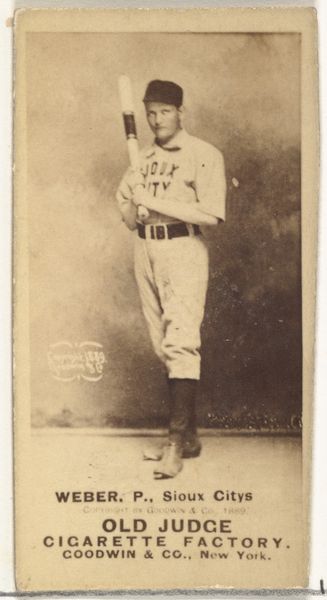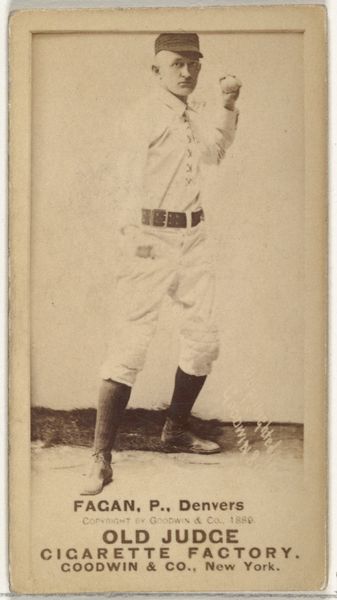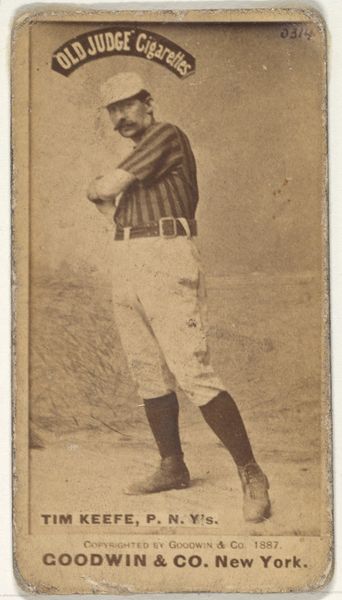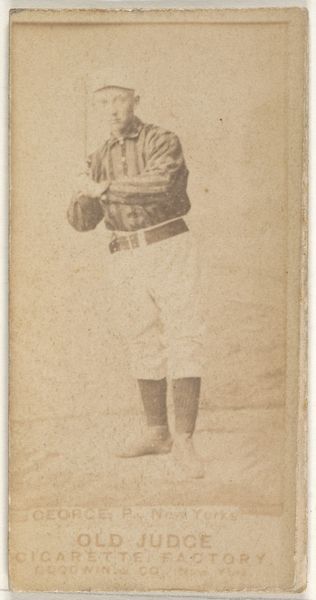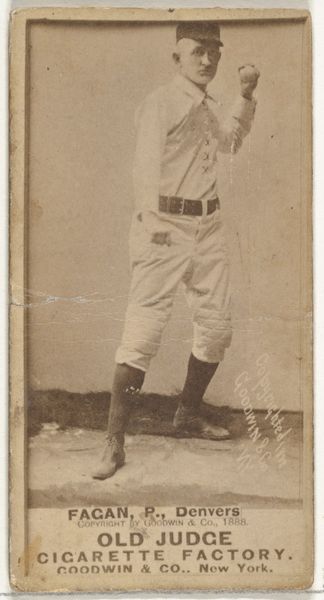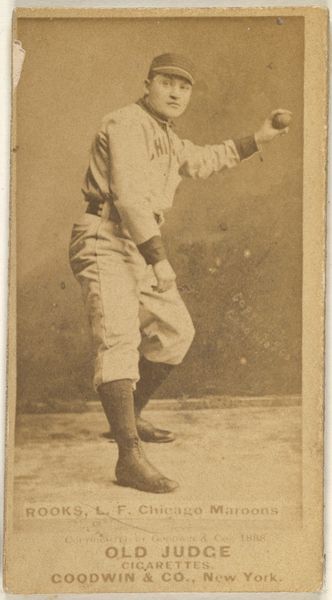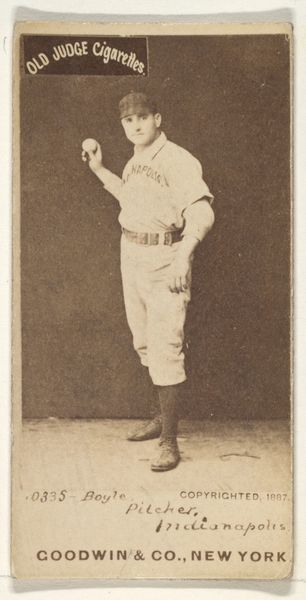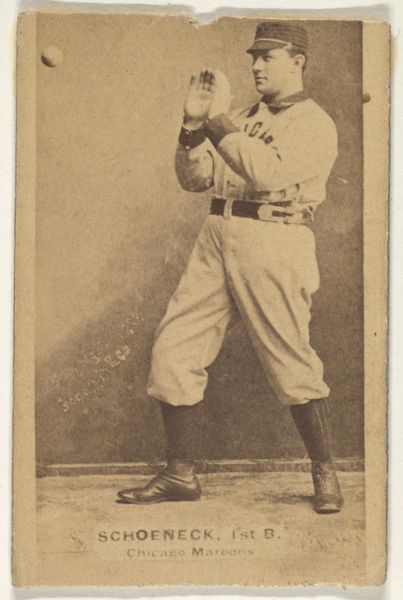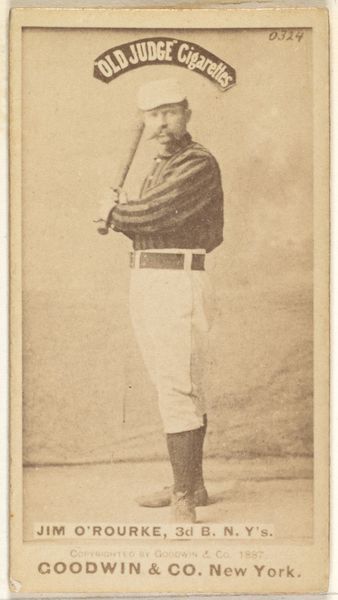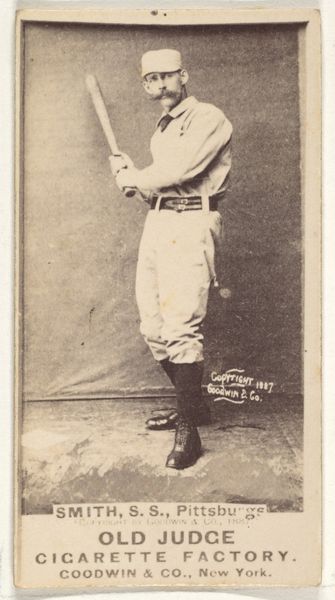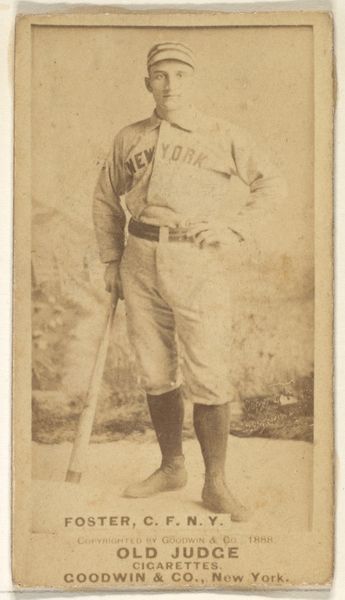
Edwin Forrest "Ned" Bligh, Catcher, Cleveland, from the Old Judge series (N172) for Old Judge Cigarettes 1889
0:00
0:00
drawing, print, photography, albumen-print
#
portrait
#
drawing
#
toned paper
# print
#
baseball
#
photography
#
men
#
athlete
#
albumen-print
Dimensions: sheet: 2 11/16 x 1 3/8 in. (6.9 x 3.5 cm)
Copyright: Public Domain
Editor: Here we have an albumen print from 1889, entitled "Edwin Forrest 'Ned' Bligh, Catcher, Cleveland," part of the Old Judge series by Goodwin & Company. The sepia tone and compact composition give it a kind of stoic energy. What elements jump out to you? Curator: Immediately, the figure’s positioning creates a compelling diagonal. Note how his outstretched arm, poised to throw, intersects with the line formed by his leg, establishing a clear dynamic. The sepia tones contribute to a flattened perspective. The tonal range offers subtle modelling, most apparent in the rendering of his uniform. Editor: The way you describe those intersecting lines is interesting. The backdrop almost seems blurred, soft, intentionally vague compared to Bligh's stance. Curator: Precisely. Observe how the focused clarity of the athlete contrasts with the diffuse background. This serves to isolate and elevate the figure within the pictorial space. Moreover, examine the tight cropping, its geometry a deliberate encapsulation of the athletic form, foregrounding the figure’s tension and preparedness. The artist’s goal, it seems, prioritizes the inherent aesthetic of form and balance. Editor: So, by downplaying contextual elements and emphasizing the body’s form, the piece transforms the athlete into a symbol? Curator: Indeed. Consider the composition's internal logic – its balance of light and shadow, its careful arrangement of planes. These are not merely representational choices but deliberate formal strategies intended to provoke aesthetic engagement independent of contextual reference. What do you think about the text placed at the bottom of the picture? Editor: The different font weights used in the text introduce layers within the image’s surface that mirror Bligh’s action, although without directly adding meaning. Curator: Yes, it is as if each formal element plays its part in structuring visual attention. A useful piece! Editor: I hadn't thought about it in terms of purely formal elements.
Comments
No comments
Be the first to comment and join the conversation on the ultimate creative platform.
